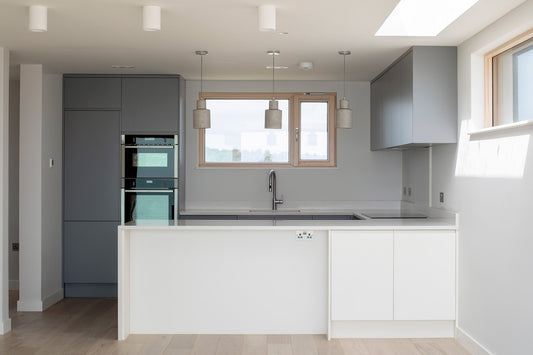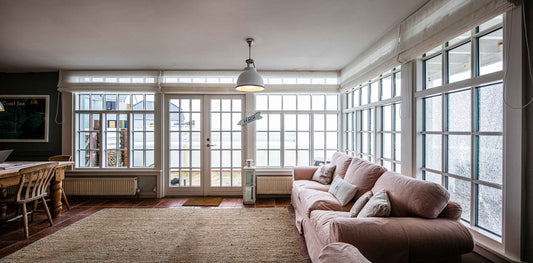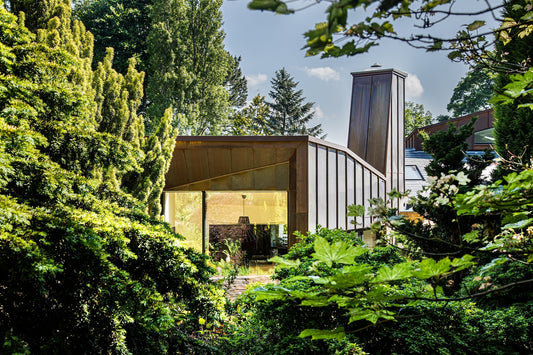The EnerPHit Standard
For those planning to retrofit an existing building, meeting EnerPHit requirements is the height of energy efficiency achievements.
Here’s what you need to know
Sharply rising energy prices, Net Zero by 2050, tightening regulations for new builds by 2030... The future of the construction industry is headed in one direction: cut energy consumption across new and existing buildings, or pay through the nose in heating costs for inefficiency.
RIBA’s 2030 targets require roughly a 75% reduction in operational energy use by the end of the decade, compared to current building regulations for domestic energy use. In numbers, that’s <35 kWh/m2/y for domestic properties compared to the current acceptable threshold of 146kWh/m2/y.
Ideally, every building would be constructed or updated to Passive House standard. Unfortunately, this is simply not practical for much of the UK’s existing housing stock.
Retrofitting existing homes to be more energy efficient extends their lifespan and provides an excellent opportunity to significantly reduce the energy consumption of old, energy-hungry buildings.
How can you do that? This is where EnerPHit comes in.
Collapsible content

What is the EnerPHit standard?
The EnerPHit standard provides requirements for retrofit projects designed to maximise the thermal efficiency of the building and drastically reduce its energy consumption and heating requirements.
What's the difference between EnerPHit and passive house?
This article assumes that you are already familiar with the Passive House standard. If not, refer to our guide to Passive House Requirements for an overview.
EnerPHit focuses on the same core criteria for the project as Passive House while accepting that meeting Passive requirements is generally not possible for a retrofit project. This is because important elements, like orientation and structural form, are already decided in an existing house.
For example: if a building was originally constructed in a way that creates numerous areas of thermal bridging through its basic fabric, it will be challenging to eliminate them entirely.
The stringent Passive airtightness requirement of 0.6 ACH will be equally difficult to achieve if the building was not originally built paying close attention to airtightness.
Other aspects of existing buildings that cannot be determined by the renovator include its form, orientation, conservation and planning restrictions, existing architecture and its position relative to neighbouring houses.
EnerPHit is designed to offer all the advantages of passive certification while remaining realistic for refurbishment projects.
More energy is required to achieve ‘Passive’ comfort levels in an EnerPHit home - but it is still a considerable step up in energy efficiency from most existing homes; even from new builds.
What is Retrofit?
Retrofit is a renovation of a building undertaken to significantly improve its thermal performance.
Typically, this involves improving – or replacing - the building fabric, rather than simply introducing renewable energy systems.
I want to meet the EnerPHit standard - what should I consider?
We know that starting out on a renovation or retrofit journey can be overwhelming.
Here is a non-exhaustive list of pointers for the build to get you started:
- Internal and external insulation with optional weather-proofing over-cladding concept
- Replace existing windows with triple-glazed timber-aluminium composite models. The EnerPHit U-value threshold is 0.85 W/m²K but, according to the Passive House Institute, there is no reason why Passive-standard windows of 0.80 W/m²K - or less - should not be used. View our Passive house product range here.
- Minimise thermal bridges e.g. by overlapping areas of external and internal insulation and adding a breathable airtight membrane to floor insulation.
- Improve airtightness e.g. by ensuring the windows contain robust seals and are installed using best practice methods to reduce the possibility for air leaks.
- Efficient mechanical ventilation with heat recovery (MVHR).
- Install or upgrade renewable energy sources.
- A Passive House approach incorporating thermal performance, air-tightness & ventilation
As is the case with Passive builds, the Passive House Institute provides an EnerPHit Retrofit Plan and a Passive House Planning Package (PHPP).
The Passipedia resource also contains a wealth of knowledge for first time and experienced renovators alike.
EnerPHit: Which Climate Zone Am I In?
The majority of the United Kingdom falls into the Cool-Temperate zone, meaning your windows and doors must have U-values of 0.85 W/(m2K) or lower to meet EnerPHit standards.
However, the Passivhaus Institute has recently released new data in the PHPP V9, which takes into account climate data. As a result, the UK now contains three zones:
- Cool-Temperate, which covers the majority of the UK. Window U-value required: 0.85 W/m²K
- Cold, which covers parts of the Newcastle area and Scotland. Window U-value required: 0.65 W/m²K
- Warm-Temperate, which covers London and the South West. Window U-Value required: 1.05 W/m²K
Ready to achieve energy efficient excellence?
Take our short survey to discover low-energy windows and doors for your project.
Two routes to EnerPHit
The EnerPHit-Standard can be achieved in one of two ways:
-
- Through compliance with criteria for the building’s components - including interior and exterior insulation, high performance windows with low U-values, and ventilation requirements
- Through compliance with the criteria for the energy demand of the building.
The energy demand method specifies a space heating and cooling demand of 25kWh/m2/year for Cool-Temperate climates* compared to the Passive House standard of 15kWh/m2/year.
Overheating** must also be less than 10% each year. EnerPHits in London and the South West, which now fall into the Warm-Temperate zone, must meet a space heating and cooling demand of 20kWh/m2/year.
-
Sometimes, though, even if the highest performance components are used, the resulting energy demand is too high for the EnerPHit standard. This might be caused by the building’s fixed orientation, for example.
* The EnerPHit standard graduates energy demand requirements by climate zones where the Passive does not; here we assume UK-based builders in Cool-Temperate zones.
** Overheating is defined as the percentage of hours with indoor temperatures above 25 degrees C each year without active cooling.
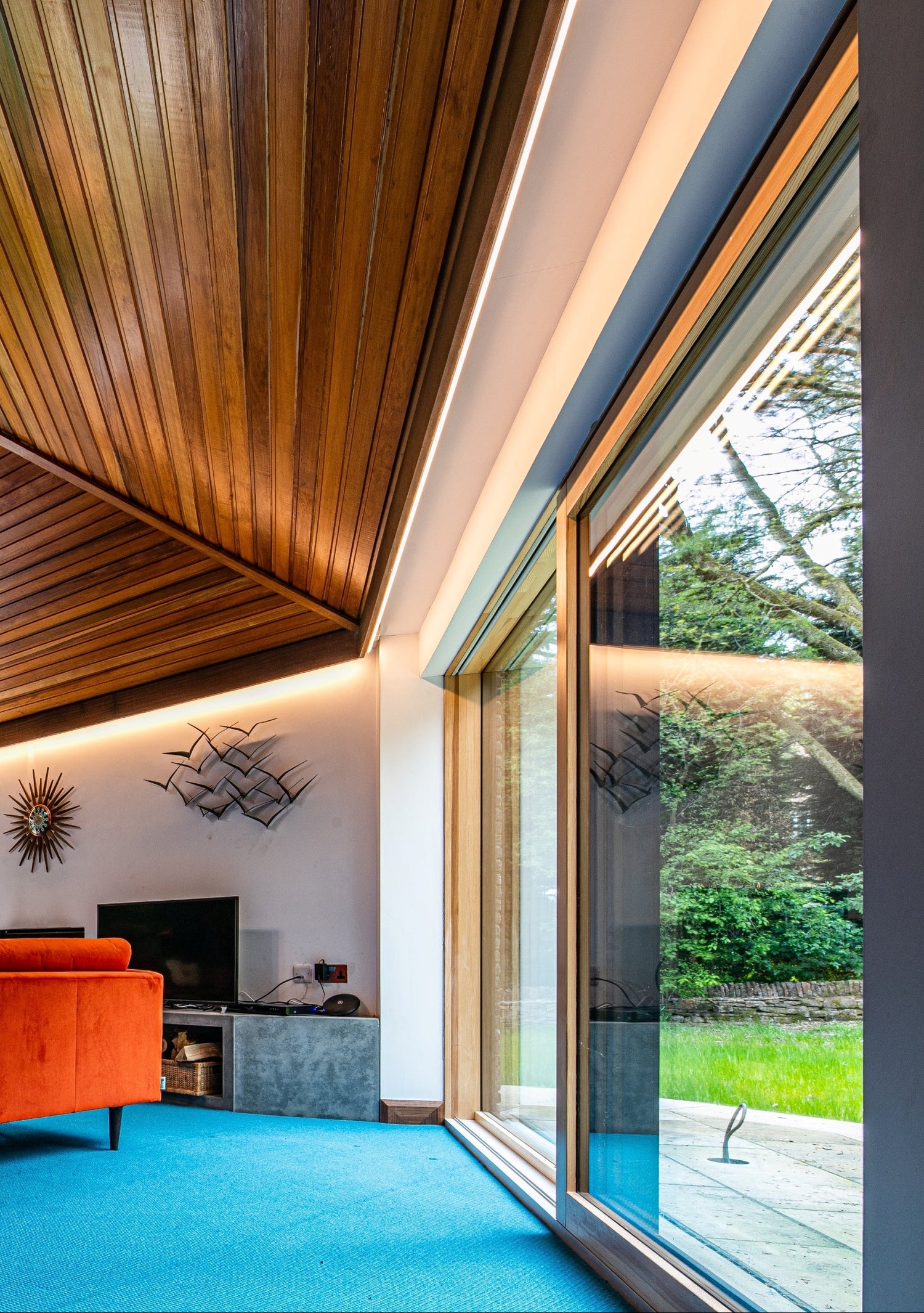
EnerPHit classifcations
EnerPHit is also banded into Classic, Premium and Plus classes based on the amount of energy generated from renewable resources.
This could include electricity produced by photovoltaics or heat generated by a solar thermal system, for example.
Regardless of the route taken, airtightness must always meet the EnerPHit requirement of 1.0 air changes per hour (Passive House certification requires a stricter 0.6 air changes per hour).
This is still a significant improvement on standard practice: best practice for new build homes requires approximately between 1.0 and 5.0 ACH (Source: Designing Buildings), but in reality airtightness scores of about 5.0 to 7.0 ACH are normal.
These cases are where the building component method comes in: if the building’s individual components can meet criteria as per the table below, the project can still be EnerPHit certified.
The component method requirements are summarised in the table below based on the climate zone of the building:
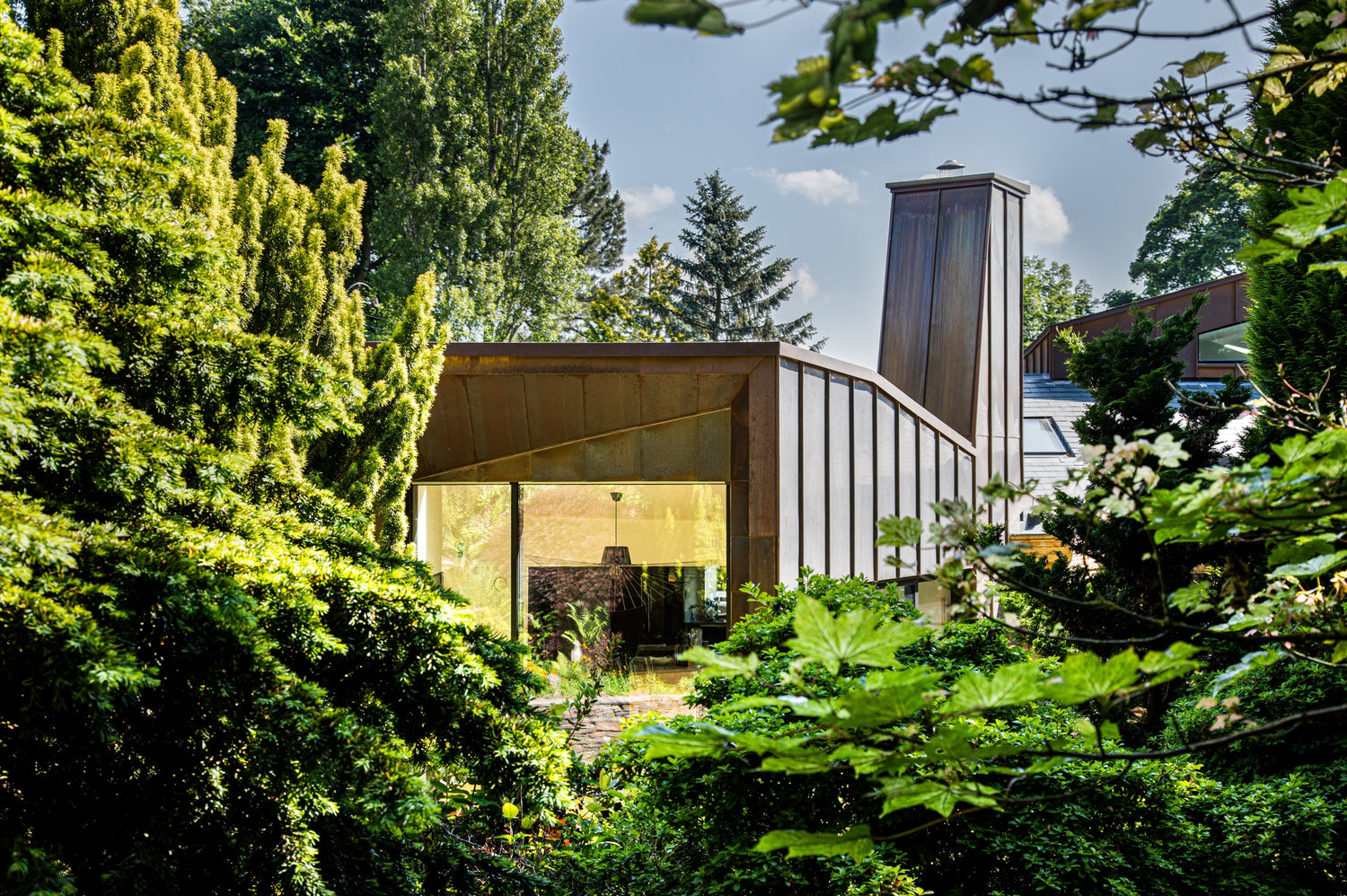
Efficient energy consumption in retrofits
To reduce energy consumption and CO2 emissions, the building sector must continue to tighten standards for new builds and improve the existing building stock.
The EnerPHit standard provides a Passive-oriented set of requirements for retrofits. It is designed to significantly reduce the energy consumption of a building while allowing a realistic amount of wiggle room for fixed factors in the project.
Achieving EnerPhit is the peak for energy-efficient renovation projects and offers the same long list of benefits as passive house certification. You can expect significant uplifts in comfort and energy economy, as well as knowing that you’ve reduced your impact on nationwide – and global - emissions.
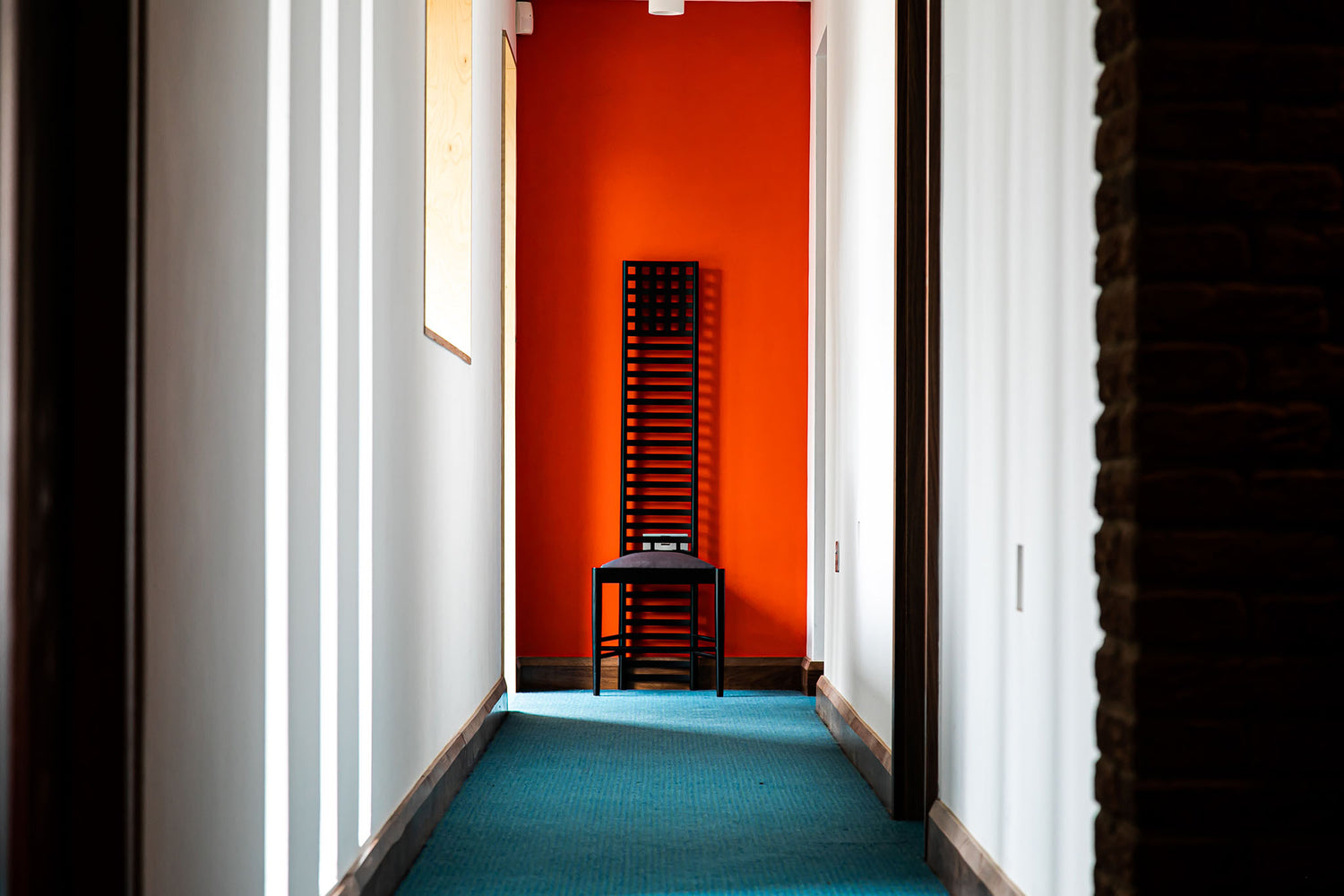
The benefits - why retrofit? why EnerPHit?
As already mentioned, EnerPHit is designed to offer the same benefits as Passive house standard buildings:
- Significant energy savings of between 75 and 90% can be achieved compared to un-refurbished or non-Passive refurbishments (Source: Passipedia)
- Increased insulation and airtightness improve comfort and provide a much more pleasant living environment.
- A consistent supply of fresh air throughout the building, meaning higher quality and more hygienic air.
- Improved structural integrity and durability of the building. EnerPHit reduces the risk of surface condensation-related damage and mould growth by increasing surface temperatures and controlling moisture.
- Significantly lower cost to heat and cool buildings thanks to better retained heat and reduced reliance on electric or gas heating.
- Reduced energy demand and costs ensure that return on the initial investment into building fabric upgrades is recouped over the building’s lifespan.
- A possible uplift in property value
Inspiration for your project
GALLERY
Unmistakably trusted.
The highest compliment is a recommendation. These are the voices of those who placed their trust in us.



